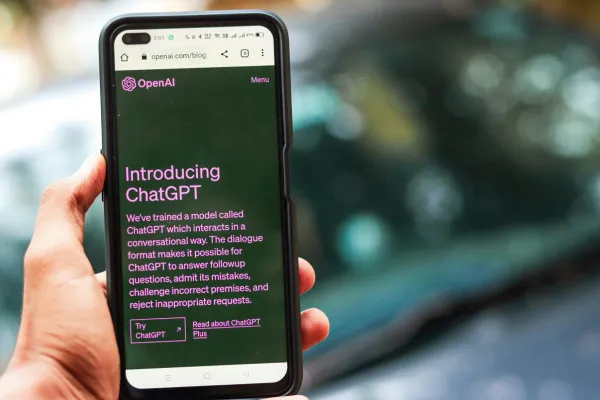Blog

I Cut My Grant Writing Time in Half with ChatGPT and Lived to Tell About It
There have been numerous articles, webinars, and workshops on the topic of using AI in grant writing. And I’ve read a lot of them. But this blog isn’t a how-to guide. This is my opinion, based on actual use.
Let’s start with a confession: I wasn’t the first to jump on the AI bandwagon. As a details-and-numbers person, I tend to avoid risks. I’m not an early adopter. I let other people figure things out, fix the bugs, and refine the process before I get on board. I just bought an air fryer, remember?
But now that I am using AI, I can tell you this: I’ve cut my grant writing time in half. And no, I’m not handing over the reins to a robot. I still do the writing. But ChatGPT is now my writing partner—and I wish I’d teamed up with it sooner.
What I Use and How I Use It
I use the paid version of ChatGPT. I do not use AI to write grants from scratch. Let me say that again: I never ask ChatGPT to generate a full grant narrative. Why? Because it makes things up. It fills in gaps with inaccurate information. And sometimes, it strings together a lot of words that sound pretty but mean absolutely nothing.
Until AI is the one reviewing grant applications, I don’t trust it to write them.
But I do trust it to help me revise and condense my work.
From Thesis to 400 Characters
Back in the day, grant narratives had flow. They read like thesis papers with elegant intros, carefully constructed arguments, and bookended conclusions. Writing grants felt like a secret skill that only a select few could master.
Then came the shift to online applications with tiny, character-limited text boxes.
Now, most grant questions have a hard cap, usually around 2,000 characters, or 400 words. The storytelling is still important, but the format? Brutal.
When this change hit, my writing time doubled. How do you take pages of research and ideas and stuff them into a couple of tight paragraphs? It was maddening. And once the cutting began, so did the tug-of-war with clients. “Can you add this?” they’d ask, and I’d reply, “Sure, what should we remove to make room?”
Hair-pulling stuff.
Then along came ChatGPT. Now, I take the long-form draft and ask it to condense the content to 400 words. It’s not perfect. I always edit it. I always verify every detail. However, it provides me with a great working draft in seconds, and I can move on from there.
Best Practices for Using ChatGPT in Grant Writing
If you'e going to use AI as a grant writer, here are a few best practices I’ve learned:
Always edit the output. ChatGPT can be confident and wrong. It will claim something as a fact when it’s not.
Garbage in, garbage out. The tool is only as good as what you feed it. If your draft is unclear or your instructions are vague, the results will be mediocre.
Give it direction. Want a specific tone? Tell it. Need exactly 400 words? Say so.
Fact-check everything. ChatGPT is a sponge. If it gets something wrong and you don’t correct it, it will continue to repeat that error.
You provide the heart. The emotional resonance, the storytelling, and the connection to your mission still come from you. AI can help shape the narrative, but it can’t feel the mission the way you do.
Final Thought
What used to take me five hours now takes two and a half. ChatGPT didn’t replace me—it works with me. It helps me do what I already do, only faster and with a little less burnout.
If you're still hesitant, I understand. I did too. But once you try it and find your rhythm, it’s hard to go back.
Just don’t ask it to write your grants for you. You’ve still got to bring the soul.
